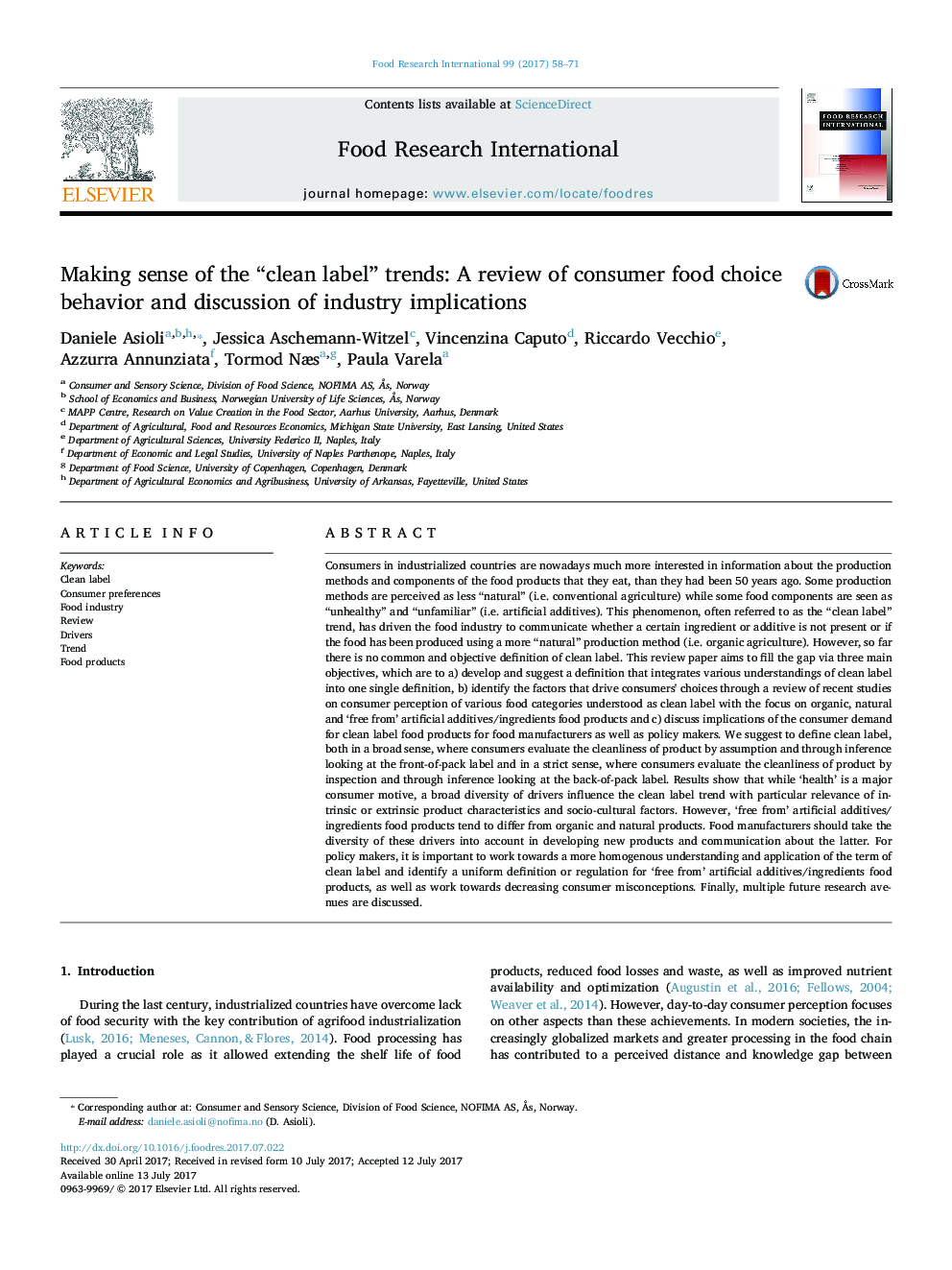| کد مقاله | کد نشریه | سال انتشار | مقاله انگلیسی | نسخه تمام متن |
|---|---|---|---|---|
| 5768078 | 1413213 | 2017 | 14 صفحه PDF | دانلود رایگان |
- We defined clean labels in a broad (front-of-pack) and strict (back-of-pack) sense.
- We focused on organic, natural and free-from artificial additives and ingredients
- Intrinsic, extrinsic and socio-cultural factors affect consumers' preferences for clean-labeled foods.
- Implications for food manufacturers and policy makers were discussed.
- Future research directions were suggested.
Consumers in industrialized countries are nowadays much more interested in information about the production methods and components of the food products that they eat, than they had been 50Â years ago. Some production methods are perceived as less “natural” (i.e. conventional agriculture) while some food components are seen as “unhealthy” and “unfamiliar” (i.e. artificial additives). This phenomenon, often referred to as the “clean label” trend, has driven the food industry to communicate whether a certain ingredient or additive is not present or if the food has been produced using a more “natural” production method (i.e. organic agriculture). However, so far there is no common and objective definition of clean label. This review paper aims to fill the gap via three main objectives, which are to a) develop and suggest a definition that integrates various understandings of clean label into one single definition, b) identify the factors that drive consumers' choices through a review of recent studies on consumer perception of various food categories understood as clean label with the focus on organic, natural and 'free from' artificial additives/ingredients food products and c) discuss implications of the consumer demand for clean label food products for food manufacturers as well as policy makers. We suggest to define clean label, both in a broad sense, where consumers evaluate the cleanliness of product by assumption and through inference looking at the front-of-pack label and in a strict sense, where consumers evaluate the cleanliness of product by inspection and through inference looking at the back-of-pack label. Results show that while 'health' is a major consumer motive, a broad diversity of drivers influence the clean label trend with particular relevance of intrinsic or extrinsic product characteristics and socio-cultural factors. However, 'free from' artificial additives/ingredients food products tend to differ from organic and natural products. Food manufacturers should take the diversity of these drivers into account in developing new products and communication about the latter. For policy makers, it is important to work towards a more homogenous understanding and application of the term of clean label and identify a uniform definition or regulation for 'free from' artificial additives/ingredients food products, as well as work towards decreasing consumer misconceptions. Finally, multiple future research avenues are discussed.
295
Journal: Food Research International - Volume 99, Part 1, September 2017, Pages 58-71
